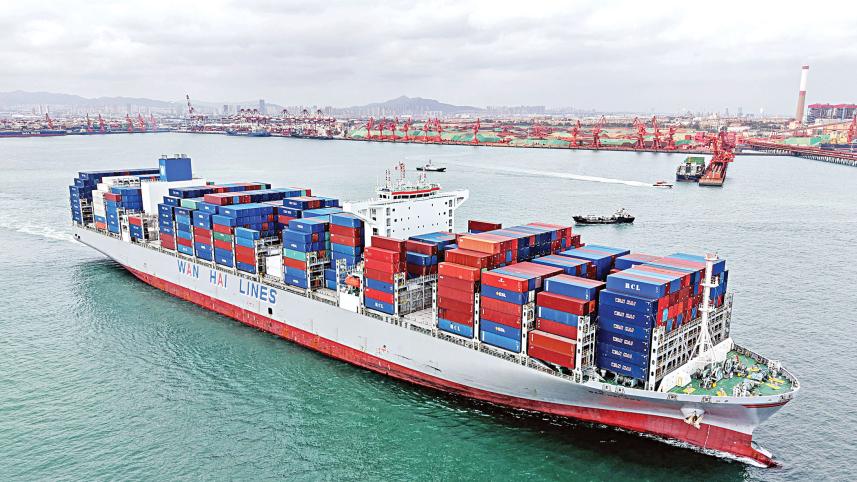China brings shipping battle to US capital market

China has opened a new front in the epic maritime battle with the US: the capital market. Beijing matched Washington's port fees but is targeting entities with American ownership. That might hit major firms with New York-traded stock. How the rules are enforced will matter, but China is showing it will defend its shipping dominance even at the risk of disrupting global trade.
Maritime tensions between the world's two largest economies kicked off in March, when President Donald Trump's administration unveiled plans to levy special docking fees at American ports for Chinese-built or Chinese-flagged vessels. The aim was to bolster US shipbuilders, which have a 0.1 percent global market share versus 53 percent from Chinese rivals. But following months of industry pushback, Washington ended up diluting the measures, which went into effect on Tuesday, by significantly easing fees from initial proposals and exempting many US-based operators.
Nevertheless, Beijing has retaliated with reciprocal port levies on US-linked vessels. While the fees are nearly identical to Washington's, the new rules apply to vessels that are owned or operated by entities that are 25 percent or more owned by American businesses or individuals. It's a clever move: while US-made ships account for just 4 percent of the global fleet, firms owning or chartering ships that might be impacted include Australia's BHP and Brazil's Vale, both of which have American depositary receipts trading in New York. If so, HSBC analysts reckon that will likely lead to a spike in freight rates.
That's potentially far more disruptive than the impact of the US fees. Shipping data firm Alphaliner estimates that the latter could cost up to $3.2 billion in 2026 for the top 10 carriers including MSC and CMA CGM, with China COSCO Shipping bearing the brunt. Moreover, Maersk and others have already switched China-linked ships out of their US shipping lanes.
Perhaps as a show of power, officials in Beijing also on Tuesday sanctioned five US-linked subsidiaries of South Korea's Hanwha Ocean which it accused of assisting and supporting a US probe into Chinese trade practices. Notably, Hanwha recently pledged to invest $5 billion to expand its American shipyard in Philadelphia. This puts other foreign shipmakers and global funds that are helping Trump's efforts to reshore shipbuilding on notice.
China's heft in global shipping and trade means it cannot only withstand Washington's salvos but also hit back hard. Against the backdrop of the escalating trade war, expect choppy waters ahead.
Starting October 14, US authorities will charge ships of Chinese owners or operators $50 per net tonne of goods they bring to American ports.
China announced countermeasures on October 10 to charge US-linked ships 400 yuan ($56) per net tonne, effective on October 14. In addition to US-built and US-operated vessels, China has also imposed special port fees to ships owned or operated by US individuals or businesses which hold more than 25 percent of the equity, voting rights or board seats.



 For all latest news, follow The Daily Star's Google News channel.
For all latest news, follow The Daily Star's Google News channel.